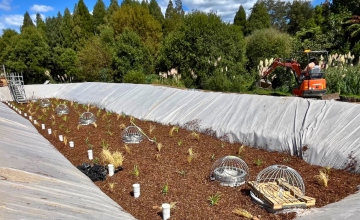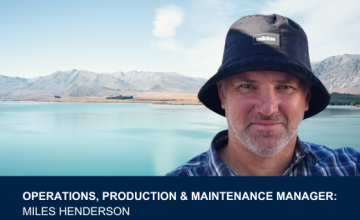Bio Retention: Lessons Being Learned (Part 1)
29 March 2016
As Bio-retention becomes more popular in the US many types of designs are being deployed throughout the US. Though relatively simple in concept many are finding that devil is in the details with respect to maintenance and performance. These issues are driving newer designs and improving criteria for use. Over the next few issues I will be sharing some of the experiences and lessons learned with Bio-retention design. This blog is a summary of a workshop given in San Antonio in 2013.
Suitability
As with all stormwater control measures, we have tendency to think that one size fits all. Very few of these measures are designed differently for varying land use or climatic regions. We need to remind ourselves that Bio-retention approaches are typically sized to provide for the treatment and management of the more frequent small storm hydrology. So even though the 95% annual runoff volume may be effectively managed, we still need to consider larger design storms which can quickly inundate bio retention systems.
Other suitability issues include low permeability soils, proximity to basements foundations and utilities. For example, in areas where permeability is an issue Bio filtration is used where an underdrain is installed to discharge excess water to surface waters. Topographic issues such as steep slopes or areas subject to liquefaction or landslides are important considerations when infiltration large volumes of surface water.
In many older cities issues of polluted sites and potential contaminant transport are frequently encountered. Many municipalities which are retrofitting or redeveloping infiltration based technologies also need to consider utility conflicts as well as conflicts with existing codes. For example, the installation of bump outs may interfere with the passage of emergency vehicles. Other impacts such as seen in drought stricken southern California are raising questions about the irrigation needs during dry periods.
With many WSUD technologies such as green roofs, rain gardens, permeable paving there are questions about access and right of way to provide for both inspection and maintenance. Typical end of pipe designs provide for right off way whereas a green roof for example, does not.
Bio retention systems have provided the designer with a great approach to combine stormwater management with site design. Many new development in the City of Portland have integrated WSUD into the overall design to effectively manage rainfall runoff which improving the aesthetics (and value) of the development.
While we all recognize the benefit of these systems we are learning some valuable lessons on how and where they are installed as well as maintained. Learning the lessons of those who are the first adopters is an important part of technological development.
There are a number of design considerations one must take to insure a successful installation. Issues covered in the workshop were:
- Pollutants and Pollutant Transport
- Sizing
- Siting
- Inlet Issues
- Media
- Clogging
- O&M
- Cost Considerations
Pollutants and pollutant transport are not always what we expect. In the US we are regulating TSS, TP, TN (in some areas) and heavy metals (Zn, Cu, Pb) in some areas as well. For solids we tend to get into the mindset that TSS is a reflection of the total solids loads, but this is not the case. Gross solids contribute substantial loads to Bio Retention systems in both organic and inorganic material. Originating from vegetation, trash and debris, road way degradation, localized erosion and sediment transport, these pollutants contribute a substantial amount of the mass captured in Bio Retention Systems. For example in the City of Portland it is estimated there are 0.07 Kg/m to about 0.4 Kg/m of gross solids.
The presence of these pollutants can block inlets, lead to decreased storage capacity of the system, cause channelization in the retention cell, have significant aesthetic impacts and require more frequent maintenance.
In the next issue I will provide many of these design considerations and issues encountered in the US.
James Lenhart, PE, D.WRE

